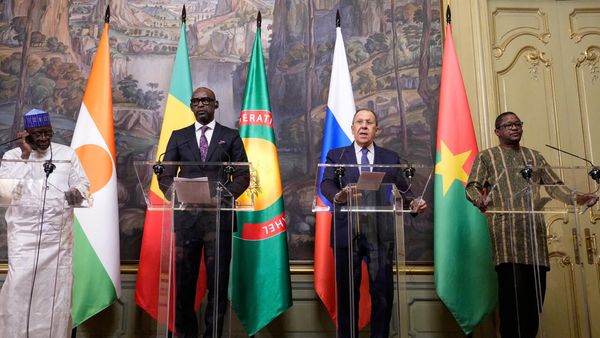
President Donald Trump is once again back with his tariff hammer, and this time, the auto industry is feeling the squeeze. Last week, Trump announced a sweeping 25% tariff on “all cars that are not made in the United States,” along with certain automobile parts. According to his executive order, the tariffs will hit vehicles on April 3 and auto parts by May 3. And, of course, the market didn’t take kindly to the news, sending shares of several automakers like General Motors (GM) and Ford (F) into a nosedive.
Having said that, luxury powerhouse Ferrari (RACE) is also among the many automakers in the danger zone thanks to its exclusive Maranello, Italy manufacturing, making it fully exposed to Trump’s aggressive tariffs. Yet, interestingly, investment firm Bernstein seems to believe the luxury car maker is built to power through the storm even as the broader industry faces headwinds. So, let’s take a closer look at what's driving this bold vote of confidence.
About Ferrari Stock
Founded in 1947, Italy-based Ferrari RACE) is often synonymous with speed, luxury, and prestige. Famed for its high-performance sports cars and rich motorsport legacy, Ferrari stands as a symbol of automotive excellence. Apart from its cutting-edge engineering and elite performance, Ferrari’s success story also hinges on strategy. By capping annual production, Ferrari creates an air of exclusivity, driving demand and safeguarding its elite brand status.
Valued at roughly $104 billion by market cap, the luxury automaker appears to be lagging, with shares down roughly 2.7% over the past year, while the broader S&P 500 Index ($SPX) gained almost 5.3% during the same stretch.

From a valuation perspective, Ferrari is hardly a bargain. The stock is trading at a steep 46.8 times forward earnings and 14.3 times sales, much higher than its sector medians of 15.26x and 0.88x, respectively.
A Closer Look at Ferrari’s Q4 Performance
Shares of legacy automaker popped nearly 7.1% on Feb.4 after the company unveiled its stronger-than-expected 2024 fourth earnings report. Net revenue for the final quarter of 2024 showed a 14% year-over-year growth to 1.7 billion euros ($1.85 billion), edging past estimates by roughly 4.6%. However, it was the bottom-line growth that truly stole the spotlight. EPS for the quarter soared an impressive 32% annually to 2.14 euros ($2.28), far exceeding Wall Street’s forecast of just $1.89 per share.
The company’s strong performance during the quarter can be largely attributed to a richer product mix and growing demand for personalization, which drove its average selling price higher. During the quarter, Ferrari’s shipments shot up 2% year over year to 3,325 units, while full-year deliveries edged up 1% to 13,752 units. Operating profits for the quarter also surged a notable 26% annually to 468 million euros ($499 million).
While reflecting on the company’s financial performance, CEO Benedetto Vigna praised the company’s 2024 results as "outstanding.” The CEO further added, “On these solid foundations, we expect further robust growth in 2025 that will allow us to reach one year in advance the high end of most of our profitability target for 2026." For fiscal 2025, the luxury automaker is forecasting revenue of at least 7 billion euros, reflecting around 5% year-over-year growth, while adjusted EPS is expected to come in at least 8.60 euros, marking a 2% increase.
Ferrari Soars on Efforts to Counter Tariffs
Ferrari is already shifting into high gear to counter the tariff hit. On March 27, shares of the luxury automaker inched up more than 3% after the company revealed in a press release its plans to raise prices by up to 10% on select models after April 1 in response to the new U.S. auto tariffs on European Union-made cars. The Italy-based carmaker confirmed that prices will remain unchanged for all vehicles imported before April 2.
Plus, even after April 2, the Ferrari 296, SF90, and Roma families will remain unaffected by the hike. However, its more sought-after models, like the Purosangue SUV, the 12Cilindri, and the F80, will be getting a hefty price bump. The Purosangue SUV, which starts at around $430,000, will see a roughly $43,000 increase. Meanwhile, the limited-edition F80, with a starting price of over $3.5 million, will soar by over $350,000.
What Do Analysts Expect for Ferrari Stock?
Bernstein analysts seem to think Ferrari’s luxury appeal is strong enough to weather the tariff turbulence. While tariffs are a significant headwind, analysts argue they “[do] not break the Ferrari story.” The investment bank remains firmly bullish on Ferrari’s resilience, highlighting its affluent U.S. customer base, which is likely to absorb the higher prices without flinching.
Analysts, including Stephen Reitman, noted that since most Ferrari buyers already own multiple models, any increase in new car prices will be somewhat offset by the rising value of the Ferraris already in their garages. Bernstein’s tariff model projects varying impacts based on how much of the cost Ferrari passes on to its customers. If the company absorbs the full 25% tariff, it would result in a 3.5 percentage point hit to EBIT margins and reduce 2025 EPS by 1.39 euros.
However, the firm expects Ferrari to pass most of the tariff costs onto its customers, limiting the financial blow. With a full pass-through, Bernstein estimates no impact on EPS and only a one-percentage-point reduction in EBIT margins. Even with a 50% pass-through, the hit would be 0.70 euros to EPS and 2.2 percentage points to EBIT margins. Ultimately, Bernstein concludes that while the tariff hike is “unwelcome,” it’s unlikely to dent Ferrari’s dominance. The firm believes that even with double-digit price hikes, Ferrari’s elite status will remain unshaken, keeping demand among its wealthy U.S. clientele firmly intact.
Overall, Wall Street continues to favor RACE, giving it a consensus rating of “Moderate Buy.” Of the 15 analysts covering the stock, eight advocate a “Strong Buy,” two recommend a “Moderate Buy,” four maintain a “Hold,” and only one suggests a “Strong Sell.” The average price target of $521.33 represents potential upside of 22.1%, while the Street-high target of $584 suggests an even greater jump of 36.8% from current levels.








